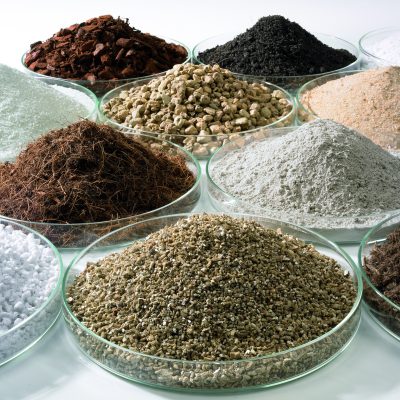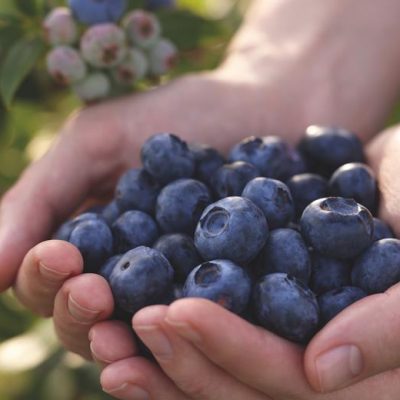Plant Variety Protection: A Responsibility We All Share
- . May 2025
By Mario Steta
As has been expressed, while there are many topics impacting the global blueberry industry, there are some that by its nature, benefits and repercussions take a leading role. While trade as we have analyzed is the one key focus area today, other topics like intellectual property, food safety, social and environmental impacts, and competitive strategies have been very relevant for the evolution of our sector.
 Most of us were not part of the efforts to set up the International Union for the Protection of New Varieties of Plants (UPOV) in 1961, but all of us have benefited from what UPOV has generated and the way it has impacted agriculture in many, and diverse forms.
Most of us were not part of the efforts to set up the International Union for the Protection of New Varieties of Plants (UPOV) in 1961, but all of us have benefited from what UPOV has generated and the way it has impacted agriculture in many, and diverse forms.
While I believe I had a good understanding of UPOV, its objectives, resources and impact, in the interview to Yolanda Huerta, Vice Secretary-General of UPOV, which you can find in this newsletter, I was able to gain a much deeper sense of how plant variety protection has been a key factor to improve agriculture in an integral manner, from production to consumption.
When thinking of topics of this nature we mostly tend to think of them in two dimensions: how have we lived or been impacted by them directly or indirectly, and what is their significance in the context of wider policies and repercussions within agriculture nationally or internationally.
Plant variety protection clearly reflects on both dimensions, and no doubt the evolution of the produce industry in general and the global blueberry sector in particular demonstrates its impact. How? Almost 1400 registered varieties, improvements in yields, flavor, shelf life and adaptability to diverse growing conditions, in addition to evolving levels of pest and disease resistance and an elevated focus on climate impact and plant architecture for labor efficiency, which includes real possibilities for mechanical harvest for fresh markets.
Yet despite the clear benefits, we could think of some challenges and questions worth asking:
- When confronted with the possibility of access to “suspect” genetics, do you look the other way? If aware of the possibilities of plant protection not being respected, do you support the efforts of your national institutions, such as SENASA in Peru, USDA/USPTO in the USA, SAG in Chile and CPVO within the EU? My own experience with SNICS in Mexico, while not perfect, was extremely positive. Similar to the examples of Kenya and Vietnam provided by Mrs. Huerta, Mexico´s incorporation to UPOV in 1997, and its willingness to enforce its rules meant that from almost no flower, tree or shrub registered varieties present into the 1990’s by the late 2000’s dynamics had changed having a major impact in berry, fruit and flower production and exports.
- How to balance access to genetics and the protection of breeder rights when there is a social impact component that speaks for fairness and balance of benefits? UPOV, national governments and industry need to work closely so that examples where breeding/production/marketing entities incorporate small producers, expand in scope and impact.
- What is a proper balance of cost/benefit for breeders and propagators in relation to the true value generated for growers? How can this be judged? How often do these companies make the hard calls not to continue selling varieties that have demonstrated deficiencies or that should not be promoted in certain production regions?
- As cited by Mrs. Huerta, the 1991 Act is the latest Act by which 61 States and two organizations are bound, while the 1978 Act still binds 17 States. It has been now over 30 years since the last “update” and would be interesting to know where UPOV can improve and enhance its role, and how changes in technology, including AI, could formally impact the current provisions.
- As with most public policies, and particularly those regulated by international organizations, the impact of political decisions and of “national interests” can diminish the intended benefits or blur established obligations. While many see local genetic resources as a national right to be controlled and regulated, and at times there have likely been some good reasons for politicians to promote this approach, the benefits of global germplasm distribution and propagation have been validated for centuries. Benefiting local communities where such germplasm is located has to be acknowledged, and conservation of such resources is now a global priority that needs to be supported.
The recent ruling in China, by which Australia-based Mountain Blue Orchards won a legal battle over the unauthorized propagation, production, and sale of its Ridley 1111 variety is an example that speaks of much of what UPOV’s mandate implies. With Chinese growers and consumers benefiting by the certainty of what this ruling implies, we should see this example as one of the reasons of why indeed we should have no doubt that plant variety protection and enforcement is a responsibility we all share.
07.05.2025
IBO Editorial







